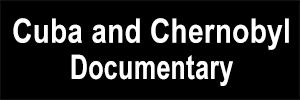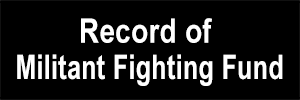The fundamental decisions facing the Puerto Rican people are made not in San Juan, but in Washington. Ever since Washington sent 15,000 U.S. troops to wrest control of Puerto Rico from Spanish rule in 1898, U.S. capitalists have distorted and twisted production on the island to fit their needs, exploited the labor of working people, and plundered the island’s natural resources in search of superprofits. Colonial rule means working people face not only the exploitation of domestic and foreign capitalists, but also direct rule from Washington.
But the U.S. rulers have faced resistance from working people in Puerto Rico from the very beginning.
To meet the needs of the U.S. market, the propertied rulers boosted sugar production, developing large capitalist plantations and pushing small farmers off the land.
A series of strikes by workers in sugar, tobacco, garment, trucking and on the docks, culminated in major walkouts by sugar workers in 1934. Around that time U.S. capitalists owned some 50 percent of the sugar plantations and 85 percent of coffee plantations. The sugar workers asked Pedro Albizu Campos, leader of the Nationalist Party and well-known fighter for independence from colonial rule, to represent them and they pushed the sugar bosses back.
By the 1950s and ’60s shifts in world sugar production pushed Puerto Rican industry into decline. The U.S. rulers responded by taking advantage of low wages to profit by industrializing Puerto Rico through a program known as Operation Bootstrap, which gave long-term tax breaks to U.S. bosses who opened up shop there.
U.S. companies set up dozens of factories, from pharmaceutical to tuna processing, attracted by the cheap labor and tax incentives. Since Hurricane Maria battered Puerto Rico, the U.S. Food and Drug Administration warned about drug shortages on the mainland, since some 10 percent of all medicine taken there is still manufactured on the island.
The capitalist industrialization decimated agriculture. In 1938 some 65 percent of the food consumed in Puerto Rico was produced there. Today the island imports some 85 percent of its food, mostly from the U.S.
The 1920 Jones Act, which requires that all cargo shipped to the island from U.S. ports be carried on U.S.-owned ships, increased shipping costs, and the profits of U.S. companies at the expense of workers and farmers in Puerto Rico.
From 1996 to 2005, as falling profit rates led U.S. capitalists to cut investment in production, Washington phased out many tax breaks, accelerating the impact of the worldwide capitalist economic crisis on the island.
Bonds: deeper colonial plunder
As factories closed, throwing thousands of workers to the curb, capitalists saw another way to profit off the people of Puerto Rico — debt. From 1996 to 2015 various Puerto Rican government bodies more than quadrupled the “sale” of bonds. Hedge funds and other coupon clippers poured billions of dollars into high-interest speculative bets, hoping for inflated returns. Bonds sold by the colonial regime were not to invest in infrastructure or other projects benefiting working people, but often to pay off the interest and principal on previous bonds coming due.
The colonial government and PREPA — the Puerto Rican power utility — were buried in debt.
As the capitalist crisis and the debt load increased, the colonial regime slashed social services, decreased pensions for government workers, increased sales taxes and laid off tens of thousands of public workers. The workforce at the government-owned electric utility was slashed nearly in half, undercutting even routine maintenance of antiquated equipment. Even with these drastic measures the government couldn’t keep up with its debt payments.
Last year then President Barack Obama appointed a fiscal board with extraordinary powers to control the finances of Puerto Rico in an attempt to ensure payment on the debt. The board ordered Gov. Ricardo Roselló to make even deeper cuts.
When hurricanes Irma and Maria hit, the colonial debt stood at $74 billion, the island’s infrastructure was falling apart, and unemployment was double that on the mainland.
Even before the hurricanes, the labor force participation rate — the percentage of workers who are employed or classified as “actively” looking for work — stood at just 40 percent, compared to 63.1 percent in the U.S. Per capita income was half that of Mississippi, the poorest of the 50 states. More than 1,000 people were leaving for the U.S. every week, where they become part of the U.S. working class and its struggles.
When President Donald Trump visited the island Oct. 3, he said the bondholders should “say goodbye” to hopes of getting paid. But then the White House backtracked, saying it would stay out of the fiscal board’s handling of the debt.
Resistance to colonial rule
The 1959 Cuban Revolution gave a boost to those fighting for an end to colonial rule in Puerto Rico. Like it did to Albizu Campos — who was jailed several times for his opposition to U.S. colonial rule — Washington and the colonial regime clamped down on the growing independence movement. He was one of the tens of thousands of Puerto Ricans targeted by FBI spies and disrupters.
The FBI and colonial police framed up and jailed independence fighters like Rafael Cancel Miranda and Oscar López. They executed independence fighters in cold blood, like former political prisoner Filiberto Ojeda Ríos in 2005.
Looking at this history, it’s easy to see why Cancel Miranda says, “The hurricanes caused a lot of damage, but not as much as colonialism has.”
But in the 120 years the U.S. rulers have run roughshod over Puerto Rico, they have never been able to stamp out the resistance to colonial rule.
|
Printer-friendly version of this article |








 click here for information and literature from the Socialist Workers Party 2016 campaign
click here for information and literature from the Socialist Workers Party 2016 campaign a magazine of Marxist politics and theory from 1934 to the present
a magazine of Marxist politics and theory from 1934 to the present an international news magazine published from 1963 to 1986
an international news magazine published from 1963 to 1986 a socialist magazine in Spanish published from 1977 to 2005
a socialist magazine in Spanish published from 1977 to 2005




